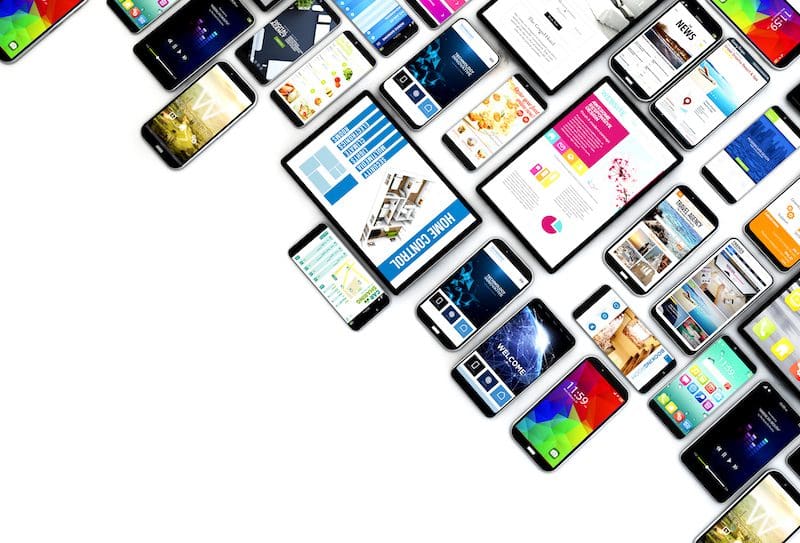
Website Design: How Space, Color, and Typeface Affect User Interaction
Websites are much more than just a placeholder for your business’s information. Everything listed on the site plays an integral role in user interaction. Having an online presence is more important now than ever before. But, it’s critical to get your website design correct, or it will affect the engagement.
Improved engagement should start with a reliable user journey and strong visual content. How your website is perceived visually dramatically influences how others find, read, and engage with your brand. It also has a lot to say about who you are what authority you’re trying to take.
Important Visual Aspects of Website Design
Writing Website Content
We talk a lot about content because we think it’s king. And, we mean it. Why? Most of the design of your website is focused on the content. Your website designer will look at the body of content and consider the text during the application. How much or little will drive the focus. Too much content and you run the risk of losing customers. The bounce rate increases, which isn’t good for rankings. Not to mention, the design looks muddy.
Old websites focused heavily on packing the page with TONS of content. We’re talking thousands of words. You need the content to help you establish high rankings, but you don’t need to go overboard. Hiring a great content writer with experience in compiling website copy is a great practice. They should have the professional expertise to make your titles, subtitles, and body lead your users on a great experience.
Your content should be clean, organized, and rich with keywords.
Adding Space to Your Website Design
Website design is all about organizing content. And, we don’t just mean written words. Images, videos, CTAs, downloads are all part of “content.” A great website designer considers all facets and organizes them appropriately. Space is a great attribute that has a dramatic impact on how the user feels while on the page.
You should look at each page on the website as a piece of real estate. It’s a property that you want to fill with content that will drive the user to engage with your brand. How the visitor feels when they arrive at this piece of real estate has a dramatic effect on engagement. Regarding the psychology, space or “white space” gives the user time to breathe.
Let’s back up a second. What do we mean by “white space?” White space is any part of the web page that doesn’t have an image, text, links, forms, buttons, video, or another piece of content. Ladden your pages with tons of information and the user become overwhelmed. Respect the white space, and you’ll present yourself as a professional and organized.
Designers have been relying on white space for decades to help convey messages. The more white space, the more “minimalist” the look.
Adding Branded Color Schemes to Website Design
Before we dive into the different ways color makes us feel, let’s talk about integrating branded color schemes into a website. You have a couple of ways you can do this, and the first is through a complete branded scheme. At the Horton Group, our primary color is purple. When approaching our website design, we could’ve gone a couple of different ways. One, we could’ve used all shades of purple. Or two, integrate purple with a neutral such as grey or white.
We went with the second. Tonal shades of purple were too overwhelming for the visitor. Studies have shown cool colors like blue, green, and purple are perceived as professional and inviting. Warmer colors are closely associated with creativity. Using neutrals has demonstrated a feeling of positivity. White is viewed as clean, grey is considered modern, and black is another professional option.
Choosing the Right Typography When Creating a New Site
The choice of font you use profoundly impacts the overall feeling of the design. If you consider the pre-historic age of website development and design, there were “website safe” fonts. It was pretty limited. Maybe ten or twenty font options were approved for use. Today, thanks to improvements in CSS, businesses have the opportunity to apply a myriad of font options. More specifically, they can lean on the branded text they chose for their identity.
Typography can be broken down into two types: serif and sans serif. Serif fonts have little feet on them, and we would say Times New Roman is the best example. A sans serif example would be Helvetica. Serif fonts provide readers with a feeling of authority. It’s been around for decades and often used by establishments like The New York Times because it gives their work tradition and expresses a sense of knowledge.
Sans serif is used quite regularly by tech companies. Sans serif fonts are newer and perceived to be modern and clean. When you want your work to appear up-to-date with a level of sophistication, sans serif is the route to go.
Nashville’s Best Website Designers
Creating a cohesive website starts with hiring the best. At Horton Group, we’ve been building successful websites for over a decade. We have a strong team of front end developers who implement all of these concepts to help your site flourish. Working collaboratively, we can help establish a new website design with a strong focus on the user journey and implements the best practices for creative design.